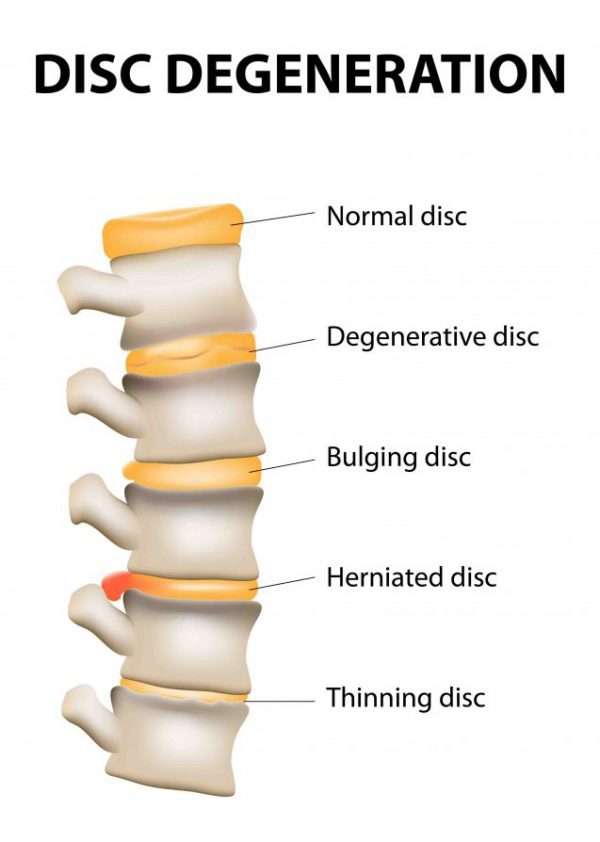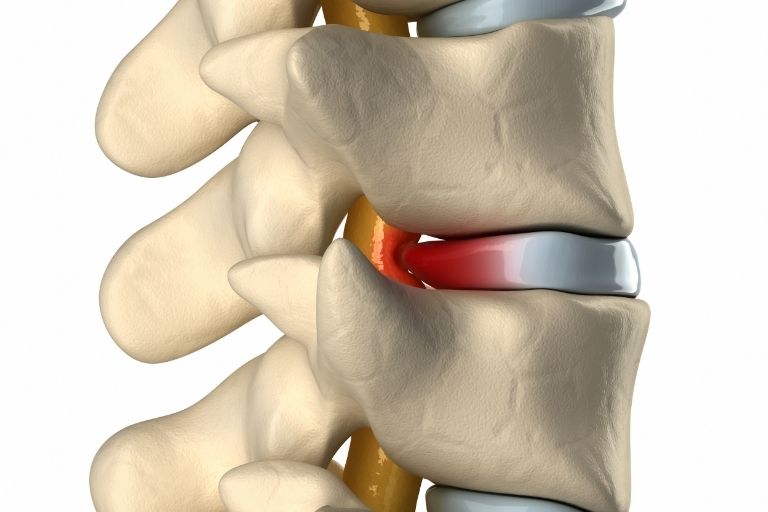According to the World Federation of Chiropractors, the Chiropractic profession is officially identified as ” the spinal health care experts in the health care system.” Most family doctors will be familiar with the medical specialists concerned with the spine, the Orthopaedic Doctor, but they will be less familiar with the Doctor of Chiropractic. This article will focus on the condition they both share expertise in… the slipped disc. The difference in approach is entirely based on each profession’s different training and basic philosophy.
Medicine delivers spinal care with three tools: drugs, surgery, and physical therapy to treat the pain and reduce morbidity. Chiropractic administers spinal care without drugs or surgery but focuses on manual manipulation methods to reduce symptoms by restoring function and relying on the body’s natural healing ability. The public will migrate from one profession to the other based on their experience and understanding of each profession, the costs associated and the time they have to commit to undergo the different options presented.
Medicine delivers quick solutions with immediate temporary relief with medications although not without concerns of side-effects over long-term usage. Medicine also offers quicker options with surgery; a few days in the hospital and some weeks of rehabilitation are faster than the months of care it takes to undergo chiropractic care. Conservative care relies on the slow healing processes and therefore patients accept to undergo a less invasive approach exchanging convenience for less costly and less invasive methods.
There have been many studies and many research papers submitted exposing the benefits of either option and it is up to the savvy patient to investigate both professions and make the better decision, based on their private value system. Conservative care takes longer but costs less and is less invasive or toxic. Medicine is a faster option for those who don’t care about costs or the side effects but time is their true priority.
Orthopedic doctors would better serve their patients by becoming more familiar with the Chiropractic profession’s specific contributions as a referral option for the simple fact that their patients will ask them for a choice when surgery is presented, but rejected by the patient. Typically, a three-week trial of Chiropractic care will offer the Orthopedist and Rehabilitation Specialist a valid case management option when their patient requests conservative care when medicine or physical therapy alone has not delivered the levels of improvement expected.
Spinal discs “slip” more commonly in the lower back, and the lumbar spine than they do in the neck area; but due to the tendency for Asians to have straighter cervical curves, the incidence of degenerative cervical discs is higher in this region. Chiropractic spinal manipulation has proven to be effective in many simple presentations of lumbar and cervical spinal disc bulges and protrusions (herniation) as well as for moderate disc herniation when Flexion-Distraction equipment is used in combination with spinal adjustments. Chiropractors will often combine some passive care in their conservative management tools such as ultrasound, cold laser, and Inferential EMS to speed up the healing in support of spinal tissue rehabilitation and to reduce nerve root inflammation.
Closing message:
Patients – if you or someone you know suffers from a “slipped disc” – bulging, herniated, or protruding spinal disc, ask your doctor for a chiropractic referral or consult with a local chiropractor to see if you may benefit from that option.
Doctors – please consider visiting a local chiropractor’s office, meeting the doctor, engage in a conversation on how you can pair up inpatient care. You will be pleasantly surprised to find the DC well-educated and willing to be a team player in the spinal care of your patients. Should the 3-week trial still result in the need for surgical intervention, you will find the patient responding better than average in post-surgical outcomes.
If you liked this post, say thanks by sharing it!asellus faucibus scelerisque. Vitae tortor condimentum lacinia quis vel eros. Ac orci phasellus egestas tellus rutrum tellus pellentesque. Id neque aliquam vestibulum morbi. Hac habitasse platea dictumst quisque sagittis purus sit amet.







